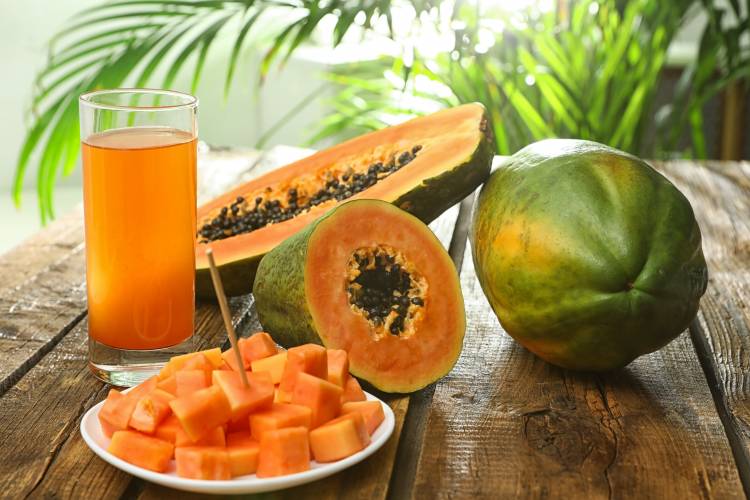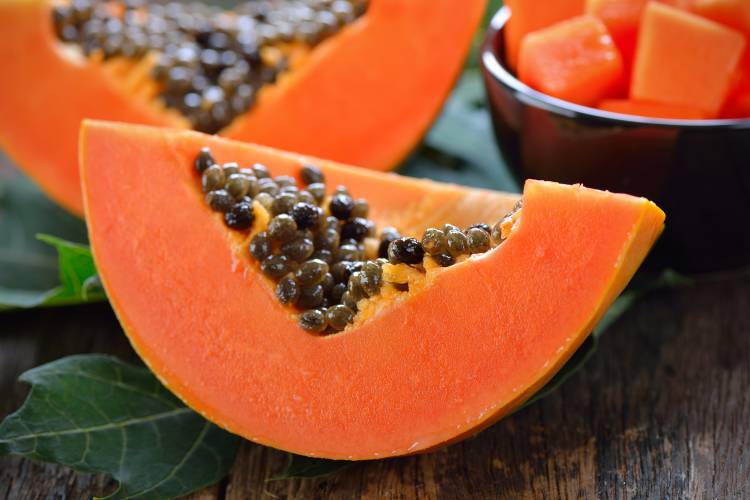The papaya and its properties
The papaya is a fruit with interesting properties that help to reduce the risk of suffering from various illnesses. Discover all its benefits.
fresh food
Share

With an amusing name and an incomparable flavour (sweet, halfway between a melon and an apricot), papaya is a tropical fruit that has become a regular item on our shopping list. It originates from the tropics and belongs to the caricaceae family. Today, it is grown throughout the world, although it needs heat and humidity to develop (in Spain, papaya plantations are mostly concentrated in the southeast of the peninsula and on the Canary Islands).
With a shape that vaguely resembles a pear, the papaya is green at first and, after 10-12 months, it acquires its characteristic greenish yellow colour. But beyond its appearance, the benefits of the papaya are what has made it one of the most well-known and recommended tropical fruits. Let’s have a look at its nutritional properties.
What vitamins does the papaya contain? In particular, it contains vitamin C. Papaya has more vitamin C than an orange (and that’s saying something), and this contributes to maintaining the body’s defences. This tropical fruit is also rich in vitamin A, which helps to care for the health of our skin. And it doesn’t stop there. Papaya also has other interesting properties, such as folic acid which helps to reduce tiredness and fatigue.
As for the nutritional information about papaya, it has a very high water content (some 88%), something that makes it a light food that tends to be recommended for almost any diet, particularly low calorie ones. However, for each 100 grams of papaya there are between 35 and 45 kcal, and 8 to 10 g of carbohydrates. Papaya is also a source of fibre.

Having reached this point, you may be asking yourself: how do I include it in my diet?. You should know that papaya has a skin shell around it and seeds and pulp inside. To open it, we recommend making a cut along it lenghtwise. The pulp is very fleshy and is an orangey colour and the seeds are black.
As for how to keep it, the best thing is to have them at room temperature. Once they have been cut, we recommend keeping them in the fridge in a plastic bag for a few days. As for their use, they can be eaten a thousand ways! Have them in juices, shakes, salads, as a snack between meals and even as an accompaniment to meat. In the market, the most commonly found variety is Solo, which is notable for its medium size and for being less than 500 grams; or the Formosa or papayon, whose flesh is pinker and juicier. The latter can also weigh up to 3 kilos.






